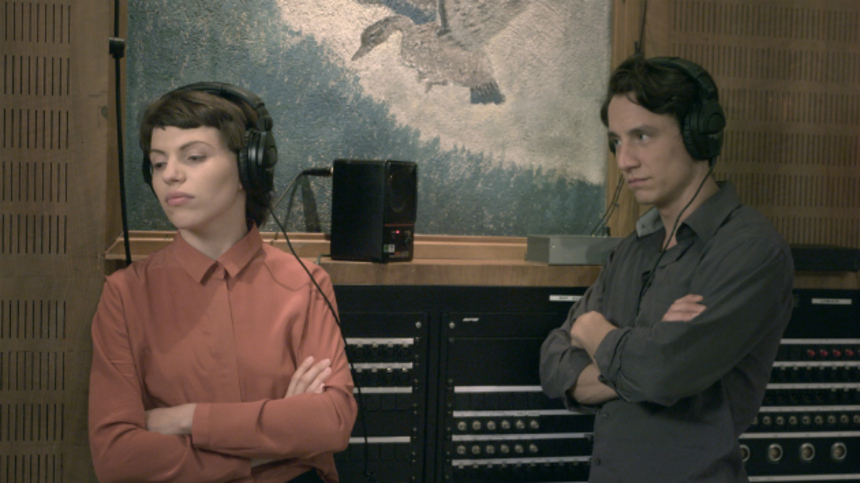Diagonale Review 2016: THE DREAMED ONES, A Film Of Gently Brutal Nuances

As fragile and trembling as it is delicately clear, Ruth Beckermann's The Dreamed Ones revolves around a young woman (musical artist Anja Plaschg) and a young man (Laurence Rupp) reading part of the nearly two decades lasting correspondence between the poets and lovers Paul Celan and Ingeborg Bachmann in a recording studio of the Vienna Radio House.
What gently unfolds from this perhaps sterile sounding situation is of perplexing subtlety and, indeed, beauty. The read love story between Paul Celan and Ingeborg Bachmann is reflected in the faces of the actors, in their glistening eyes and in the sleek undulation of their voices, the actors as if possessed by the refined language of the letters and invaded by the almost unbearably dense emotional cargo of the text. The actors' reaction to the text overlaps with the discrete slipping into the role of the two lovers.
This way a sort of double projection, not uncharacteristic of film altogether, but seldom exposed in its creation, takes place. The text reflects itself on the young actors and and their eyes and voices impregnate our way of perceiving the text. They react to the story and the story reacts to them. The camera also follows him and her in the breaks, outside of the studio, to the canteen, when smoking cigarettes on a staircase outside of the building, having small talk about the meaning of a tattoo or discussing the text.
The woody walls of the Radio House, delicate pastel colored paintings and the young actors' dusty colored clothing all emanate a frailty, a gentleness suited to the read text. Thus a discreet diffuseness lets the faces and voices stand out, at the same time giving the subtlest of spark of the past in which Ingeborg Bachmann and Paul Celan's love story unfolded. The formally and emotionally beautiful text seems to faintly perspire through the space that the camera captures and through everything in it.
An ambivalence between distance and closeness which seems to define the relationship between Paul Celan and Ingeborg Bachmann is also echoed in The Dreamed Ones by a discrete distortion in framing and editing. The two young actors read the poems from paper, their eyes following the lines and, for most of the time, microphone and the letters are in sight.
Yet at times the shots get narrower, paper and microphone slip of the frame and the directions in which the actors look meet in a mimed shot-countershot. A simulated closeness thus emerges and one might indeed say that the entire film asks if love is not only fortified by its fixation in language, but actually created by it. It asks perhaps if fiction is not as true as truth can be.
Ultimately The Dreamed Ones is a film that has the striking quality of simultaneously disturbing profoundly, in the most positive of ways, and employing gentleness in its thorough observation of the beauty of faces, voices and language







